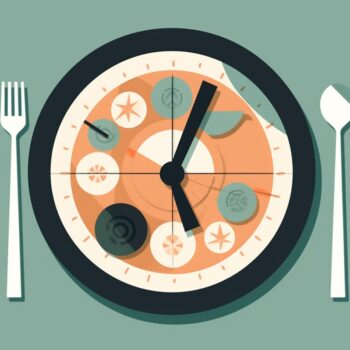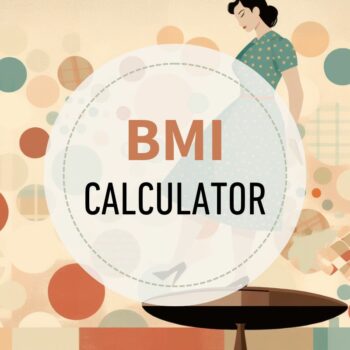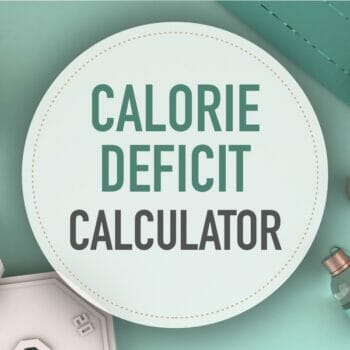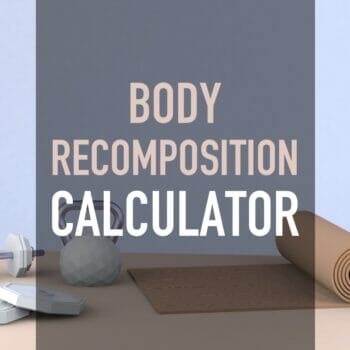Macro Calculator
This free, easy-to-use macro calculator gives you your optimal macronutrients and calories. It’s a weight loss or muscle gain calculator for both women and men.
Combine with macro counting or flexible dieting to reach your goals faster.
How to get leaner and stronger?
Our comprehensive macro-based fat loss program shows you how. Learn more
How do macros work?
The foods we eat are made up of three macros (macronutrients). These are carbohydrates (carbs), protein, and fat.
Chicken is high in protein but has no carbs; rice is high in carbs but has very little fat or protein. The three macronutrients provide the body with energy and raw materials for growth and repair.
By calculating the appropriate daily calorie amount for you, we can then break this down into the best macronutrient ratios to achieve weight loss.
Basic steps for macro counting
- Enter details into the calculator
Make sure to choose the correct goal. - Take note of your calories and macros
These will be the targets you are aiming for each day. - Track your macros
Use an app or pre-plan your meals. - Measure results
Don’t use basic weight scales.
Use proper body composition scales (we recommend Renpho) to measure fat and muscle mass changes.
What is a good macro ratio for fat loss or muscle gain?
Your macros should be based on your Total Daily Energy Expenditure (TDEE) and goals.
The calculator defaults to the best macro ratio proven to work for most people.
This ratio is:
- 30% fat
- Protein is 0.65 grams per pound of body weight,
- The remainder is carbs.
Depending on your goal, this will be either a calorie deficit or a surplus.
You can go further and make more adjustments: Perhaps you’re an extreme endomorph and do better with fewer carbs. Or perhaps you have one kidney and need to eat less protein.
You can fine-tune your results with a bit of math. See how to change your macros here.
What is a good protein ratio?
Rather than a percentage, proteins are based on your body weight. Our calculator has three settings:
- Moderate adjusts the ratio to 0.65 grams per pound of body weight.
This is appropriate for sedentary individuals or people with higher body fat percentages. - High is for active people with moderate strength training and an average body fat percentage.
- Maximum will set the ratio to 1 gram per pound.
This amount is good for bodybuilding and gaining muscle mass. You must be doing intense training.
Find out how to fine-tune your protein ratios when counting macros
Fat macro ratio
Set fat at 30% of daily energy expenditure.
Most people do very well with this amount of fat. See more about choosing the best macro fats. Because of high-fat diets like keto, many people are now eating more fat than they need to.
Carbohydrate macro ratio
Once you’ve calculated protein and fat, the remainder of your daily calories should be from carbohydrates.
Carbs fuel your body and workouts – and are the body’s preferred energy source.
If you are coming from a low-carb background, this may seem high. However, according to respected nutritional research, this is a moderate amount of carbs.
If you are eating according to your TDEE, the notion that carbs cause weight gain or stop fat loss is incorrect.
Using as a Calorie Deficit Calculator
As a weight loss calculator, this tool establishes a safe calorie deficit only.
The Lose option puts you in a 20% calorie deficit, promoting safe, steady weight loss.
The best macro ratio for body recomposition
If you want to recompose your body (lose fat and gain muscle simultaneously), then use the body recomposition calculator.
Macro ratio for maintenance
The Maintain button shows you the macro levels to maintain your current weight.
This is great if you have lost weight and don’t want to gain it back.
Macro ratio for muscle gain
The Gain button puts you in a 20% calorie surplus.
The macro breakdown is designed to build muscle fast in conjunction and must be combined with a comprehensive weight training program.
Underweight people can also use it.
TIP: Try starting with the maintenance goal and gradually increasing calories if you want lean muscle gains.
Calculating macros using your body fat percentage
The calculator uses your body weight to determine calories and macros.
However, you can obtain superior results by using your body fat percentage. The calculator allows you to choose which method: Normal for body weight, Lean Mass for fat percentage.
When to choose the Lean Mass Formula
If you are lean (have a low body fat percentage), choose the Lean Mass formula and enter your body fat %.
If you are classified as obese and have a lot of weight to lose, the lean mass formula is superior. You can read more about macro counting and obesity.
Help? Calculate your ideal body weight or get an assessment of your body fat percentage.
Why the difference? Muscle cells burn more calories than fat cells, so the more accurately we measure this, the better your results will be.
How to calculate macros per meal
You can break this down into meals once you’ve calculated your daily macros in the calculator.
Choose from 2 to 6 meals daily to see the macro ratio you can track for each meal. For some people, this is easier, but for others, this is too much detail.
Do what works for you.
Meal Plans
See a 5-day macro-based meal plan. It includes three meals and two snacks per day.
Macro calculator activity level settings
A higher activity level means a higher daily calorie goal.
For example – if you maintain your weight at 2,000 calories per day, adding vigorous daily exercise means you need more calories to maintain your weight.
If you are sedentary and trying to lose weight, adding exercise will increase your daily calorie goal.
The idea seems counter-intuitive, but more energy is required to fuel your workouts. More workouts lead to increasing metabolism; therefore, more fat is burned!
Undereating is one of the leading causes of the weight loss plateau.
So many of our clients previously “hit the wall” with dieting. They would continually reduce calories, stop losing fat, and gain weight when they eat a little more.
Macro counting defeats this by prescribing the right food and calorie levels.
Which activity level do I choose?
- Sedentary: Just regular everyday activity like a bit of walking, a couple of flights of stairs, eating, etc.
- Light: Any activity that burns 200-400 calories (females) or 250-500 calories (males) over your sedentary amount.
- Moderate: Any activity that burns 400-650 calories (females) or 500-800 calories (males) more than your sedentary amount.
- Extreme: Any activity that burns more than 650 calories (females) or more than 800 calories (males) in addition to your sedentary amount.
Other options for determining your calorie burn
- Use our calories burned calculator – it accurately assesses over 380 activities.
- Use a fitness tracker – like a Fitbit or Apple Watch (note that they can overestimate calorie burn).
- Use a suitable app – like MapMyFitness
Why should I eat more when I exercise more?
High physical activity not fueled with enough calories will lead to muscle catabolism (breakdown of muscle fiber).
This lack of nutrition could stall your weight loss, so eat up if you love to exercise!
I’ve got my macros – now what?
Once you’ve identified your target daily macros, you must determine the macros in all your foods.
By tracking them daily, you can reach your recommended macro targets that encourage fat loss, muscle gain, or whatever your goal may be.
You can learn more about the macro counting system and the flexible dieting philosophy. Many people use an app like Myfitnesspal to track macros.
For more specifics on what to eat – see a sample macro meal plan or a list of macros for familiar foods.
View article sourcesSources
- Mifflin, M. D., St Jeor, S. T., Hill, L. A., Scott, B. J., Daugherty, S. A., & Koh, Y. O. (1990). A new predictive equation for resting energy expenditure in healthy individuals. The American Journal of Clinical Nutrition, 51 (2), 241-247. Link
- McArdle, W. D., Katch, F. I., & Katch, V. L. (2010). Exercise physiology: nutrition, energy, and human performance. Lippincott Williams & Wilkins. Link
- Jequier, E. (1994). Carbohydrates as a source of energy. The American journal of clinical nutrition, 59(3), 682S-685S.
- Lemon, P. W., Tarnopolsky, M. A., MacDougall, J. D., & Atkinson, S. A. (1992). Protein requirements and muscle mass/strength changes during intensive training in novice bodybuilders. Journal of Applied Physiology, 73(2), 767-775. study abstract link
- Grundy, S. M. (1999). The optimal ratio of fat-to-carbohydrate in the diet. Annual review of nutrition, 19(1), 325-341. abstract
- Conlin, L.A., Aguilar, D.T., Rogers, G.E. et al. Flexible vs. rigid dieting in resistance-trained individuals seeking to optimize their physiques: A randomized controlled trial. J Int Soc Sports Nutr 18, 52 (2021). https://doi.org/10.1186/s12970-021-00452-2
2,104 Comments


 Menopause Macro Calculator
Menopause Macro Calculator Intermittent Fasting Calculator
Intermittent Fasting Calculator BMI Calculator
BMI Calculator Calorie Deficit Calculator
Calorie Deficit Calculator Body Recomposition Calculator
Body Recomposition Calculator
1599 CALORIES PER DAY
Carbohydrate 162
Protein 138
Fat44
These were my results and I just don’t know if I believe thats where I should be. I am 38 female, 5 ft 4, 138.5, light activity, normal, I put in high protein.
I guess I just don’t see how I would need more Carbs than proteins in order to lose 10% and gain muscle at the same time. Can you explain the reasoning with this result?
Hi Diane, I think it would be helpful to read a little more about counting macros/flexible dieting before you try to jump in. It’s important to understand the roles of the different macros and to undo what seems like misinformation you have learned about carbohydrates. I suggest you give this article a read.
I am not sure which activity level to choose. U do a fitness boxing class 3 to 4 times per week usually burn btween 750-900 calories each session. I do light weights at home and yoga at home two other days I burn under 200 on those days. I plan on running as well when the weather gets better. I have about 50 pounds to lose.
Hi Mandie, It seems like you should do three sets of macros; a sedentary set, a light exercise set, and a very active set.
Thank you so much for this resource, it’s really been informative. I am new to eating within Macros and would like some input. As I’ve been looking into this and trying different calculators, I keep getting different results. I am 33, female, 5’6″ and weight 159. I want to lose weight, but gain muscle as well. Should I focus on weight loss first and then on gaining muscle? Or I can I do both successfully? I want to restrict calories to lose fat, but increase calories to gain muscle (right?) and so I am confused as to where my Macros should be to accomplish my goal. I am currently working out 6x a week, 3x lifting weights (50-60 minutes) and 3x HIIT/Abs (30-40 minutes). Aside from working out, my day consists of being I am a mom of 6 children, in school part-time and the regular hustle and bustle of life. Any suggestions/guidance would be awesome, thank you!
Hey Megan, You can do both, but if you have more than 10 pounds to lose you probably want to focus more towards fat loss at first. Here’s an article I wrote on the subject that should help.
Thanks for the feedback and the link. Gives me a better idea of what to do. It was great to read your personal story as well. Thanks again!
looking forward to making this work
Help me understand macro
Hi Lo, I suggest you start by reading here.
Hi! I am 3 months postpartum and I am trying to tone up and lose some additional fat I gained while pregnant. I do breastfeed and have to consider that with my caloric intake. I do 3 to 5 workouts per week that range from weight lifting to HITT classes. Should I choose 10% loss or 20% loss. I’d say I need to lose 15+ pounds. Also, prior to pregnancy and during my pregnancy, I weight lifted 5 times a week.
THANK YOU!
Hi Maggie, Do 20% but also consider the recommendations for breastfeeding here. When you get close to your goal weight you can focus more on muscle building.
Thanks!
I am 4 months postpartum and I am back at my pre-pregnancy weight of 113. I do not have the muscle definition I did before I was pregnant, nor am I as lean. I am currently doing crossfit 4-5X a week to lose a few pounds (lean out), but I still want to gain muscle. Should I choose losing 10% or gaining? I don’t want to lose any muscle I have worked so hard to gain these past 4 months.
Hi Ashlei, You should eat at your maintenance levels to start and then make adjustments. If you are also still breastfeeding you need to account for that as well.
Would i change my calorie Intake/macros to reflect each day’s activity level? For example sedentary on Sunday, very active on Monday, moderately active on Tuesday etc etc
Hi Christie, yes, that would be the most precise way to do your macros. Although some people average their weekly movement to make tracking easier.
New to this and tracking macros with the MyFitnessPal app. I’m a runner and run 4-5 miles every day, so I put moderate for activity level. This says I need about 1850 calories. So when I’m tracking my diet/macros in my fitness app, do I log my running too or is that level of activity already accounted for here when I selected “moderate” activity level? If I log it, the app readjusts my cals/macros. Not sure what to do.
Hi Meredith, If you calculate your exercise macros ahead of time, you need to turn off exercise tracking in MFP. If you’re not sure how to do it, please read our tutorial.
That makes sense. Thank you!
Hello, I am a power lifter and would like to lose some body fat while maintaining my strength. I typically eat higher fats rather than high carb and it helps me to perform well in the gym. The calculator says that I should do 50% carbs and 25% fat. Can I increase the fat percentage and lower the carb percentage and still reach my goal to lose some body fat? I selected lose 10% as my goal.
Hi Angelica, The calculator offers a starting place but you are free to adjust your macros in a way that works best for you. I personally don’t think low carb is necessary to reach your goals, but some people like it. The key is maintaining a safe calorie deficit.
Thank you!!!
Hello.
I’ve been doing the macro diet for over a year now. I’m 5 ft tall I’m a 32 yr old female and very active. A personal trainer gave me 100g of protein 100g of carbs and 45g of fats. I feel like I’m not losing anymore more fat. I weight train 6 days for an hour each. I would like to get a lean body weight but also want muscle definition. Shouldn’t I be eating more? On an average day I burn 1800 calories. What am I missing?
According to your macros, you are only eating 1205 calories which is too few calories for your activity level. It looks like you’ve slowed down your metabolism and you certainly won’t add any muscle at those levels. You need to start eating more if you want to reach your goals.
Ok thank you. I’ve increased my calorie intake by about 700 calories. Now I know why I’m storing fat.
Hi, I am new to macro counting and was referred to your site for a beginners guide. I used the macro calculator to determine I need 1600 cals/day – 186g c, 112g p, 44f.
So to calculate my meals, I would use the formula (1g P=4cals, 1gF=9cals, 1gC=4cals) then take that total and subtract from my daily total of 186/112/44?
For breakfast I had an almond milk protein shake with a hard boiled egg. That equals 136P/56C/117F, if I subtract that from my daily total I have nearly expended my day. Can you tell me where I am going wrong?
Thank you so much!
Hi Lauren, It seems like you’re pretty confused. I’m not sure why you are doing the extra math? Perhaps give this article a read which should help clarify things: Counting macros You shouldn’t be doing additional math since the macros are already calculated based on the calorie assignments you mentioned. You would simply log your breakfast and its protein, fat, and carb grams would be subtracted from your daily totals.